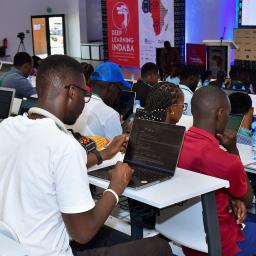 |
by Melissa Heikkilä on (#6S58Y)
This story originally appeared in The Algorithm, our weekly newsletter on AI. To get stories like this in your inbox first, sign up here. When we talk about the global race for AI dominance, the conversation often focuses on tensions between the US and China, and European efforts at regulating the technology. But it's high...
|
MIT Technology Review
| Link | https://www.technologyreview.com/ |
| Feed | https://www.technologyreview.com/stories.rss |
| Updated | 2025-12-19 09:02 |
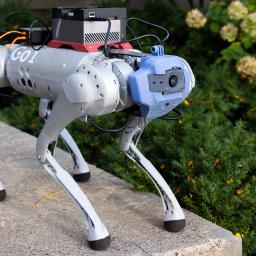 |
by Rhiannon Williams on (#6S58Z)
Teaching robots to navigate new environments is tough. You can train them on physical, real-world data taken from recordings made by humans, but that's scarce and expensive to collect. Digital simulations are a rapid, scalable way to teach them to do new things, but the robots often fail when they're pulled out of virtual worlds...
|
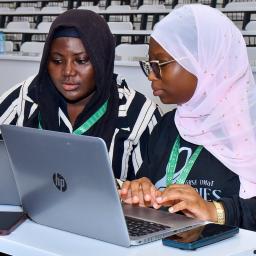 |
by Rhiannon Williams on (#6S4J8)
This is today's edition ofThe Download,our weekday newsletter that provides a daily dose of what's going on in the world of technology. What Africa needs to do to become a major AI player Africa is still early in the process of adopting AI technologies. But researchers say the continent is uniquely hospitable to it for...
|
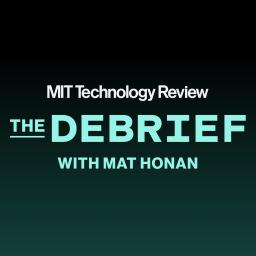 |
by Mat Honan on (#6S4GF)
Rather than analyzing the news this week, I thought I'd lift the hood a bit on how we make it. I've spent most of this year being pretty convinced that Donald Trump would be the 47th president of the United States. Even so, like most people, I was completely surprised by the scope of his...
|
 |
by Abdullahi Tsanni on (#6S4GG)
Kessel Okinga-Koumu paced around a crowded hallway. It was her first time presenting at the Deep Learning Indaba, she told the crowd gathered to hear her, filled with researchers from Africa's machine-learning community. The annual weeklong conference (Indaba' is a Zulu word for gathering), was held most recently in September at Amadou Mahtar Mbow University...
|
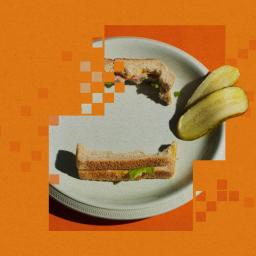 |
by Rhiannon Williams on (#6S2RP)
This is today's edition ofThe Download,our weekday newsletter that provides a daily dose of what's going on in the world of technology. Why AI could eat quantum computing's lunch Tech companies have been funneling billions of dollars into quantum computers for years. The hope is that they'll be a game changer for fields as diverse...
|
 |
by Jessica Hamzelou on (#6S24V)
This article first appeared in The Checkup,MIT Technology Review'sweekly biotech newsletter. To receive it in your inbox every Thursday, and read articles like this first,sign up here. Earlier this week, Americans cast their votes in a seminal presidential election. But it wasn't just the future president of the US that was on the ballot. Ten...
|
 |
by Edd Gent on (#6S1Y0)
Tech companies have been funneling billions of dollars into quantum computers for years. The hope is that they'll be a game changer for fields as diverse as finance, drug discovery, and logistics. Those expectations have been especially high in physics and chemistry, where the weird effects of quantum mechanics come into play. In theory, this...
|
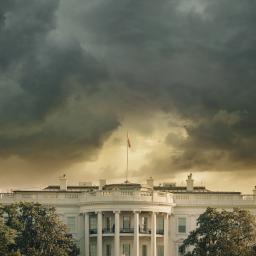 |
by Rhiannon Williams on (#6S1V9)
This is today's edition ofThe Download,our weekday newsletter that provides a daily dose of what's going on in the world of technology. Trump's win is a tragic loss for climate progress -James Temple Donald Trump's decisive victory is a stunning setback for the fight against climate change. The Republican president-elect's return to the White House...
|
 |
by James Temple on (#6S1GF)
Donald Trump's decisive victory is a stunning setback for the fight against climate change. The Republican president-elect's return to the White House means the US is going to squander precious momentum, unraveling hard-won policy progress that was just beginning to pay off, all for the second time in less than a decade. It comes at...
|
 |
by Casey Crownhart on (#6S140)
This article is from The Spark, MIT Technology Review's weekly climate newsletter. To receive it in your inbox every Wednesday, sign up here. Voters have elected Donald Trump to a second term in the White House. In the days leading up to the election, I kept thinking about what four years means for climate change...
|
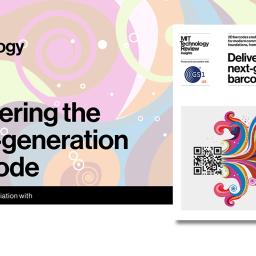 |
by MIT Technology Review Insights on (#6S11A)
The world's first barcode, designed in 1948, took more than 25 years to make it out of the lab and onto a retail package. Since then, the barcode has done much more than make grocery checkouts faster-it has remade our understanding of how physical objects can be identified and tracked, creating a new pace and...
|
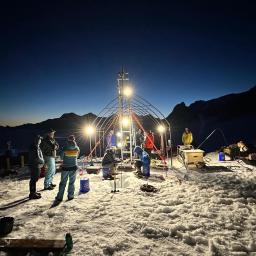 |
by Rhiannon Williams on (#6S11B)
This is today's edition ofThe Download,our weekday newsletter that provides a daily dose of what's going on in the world of technology. Life-seeking, ice-melting robots could punch through Europa's icy shell At long last, NASA's Europa Clipper mission is on its way. It launched on October 14 and is now en route to its target:...
|
 |
by Robin George Andrews on (#6S0WZ)
At long last, NASA's Europa Clipper mission is on its way. After overcoming financial and technological hurdles, the $5 billion mission launched on October 14 from Florida's Kennedy Space Center. It is now en route to its target: Jupiter's ice-covered moon Europa, whose frozen shell almost certainly conceals a warm saltwater ocean. When the spacecraft...
|
 |
by Rhiannon Williams on (#6S030)
This is today's edition ofThe Download,our weekday newsletter that provides a daily dose of what's going on in the world of technology. What do jumping spiders find sexy? How DIY tech is offering insights into the animal mind. Studying the minds of other animals comes with a challenge that human psychologists don't usually face: Your...
|
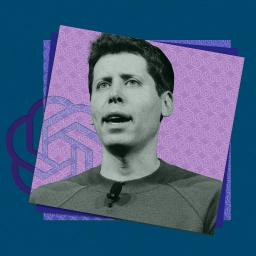 |
by Melissa Heikkilä on (#6S00M)
This story originally appeared in The Algorithm, our weekly newsletter on AI. To get stories like this in your inbox first, sign up here. OpenAI's Olivier Godement, head of product for its platform, and Romain Huet, head of developer experience, are on a whistle-stop tour around the world. Last week, I sat down with the...
|
 |
by Rhiannon Williams on (#6RZ6C)
This is today's edition ofThe Download,our weekday newsletter that provides a daily dose of what's going on in the world of technology. How a breakthrough gene-editing tool will help the world cope with climate change Jennifer Doudna, one of the inventors of the breakthrough gene-editing tool CRISPR, says the technology will help the world grapple...
|
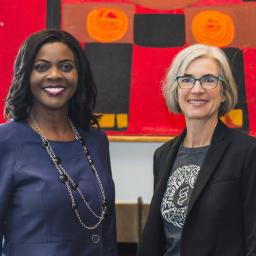 |
by James Temple on (#6RY0R)
Jennifer Doudna, one of the inventors of the breakthrough gene-editing tool CRISPR, says the technology will help the world grapple with the growing risks of climate change by delivering crops and animals better suited to hotter, drier, wetter, or weirder conditions. The potential is huge," says Doudna, who shared the 2020 Nobel Prize in chemistry...
|
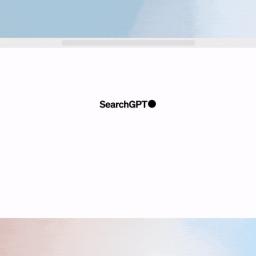 |
by Charlotte Jee on (#6RXEJ)
This is today's edition ofThe Download,our weekday newsletter that provides a daily dose of what's going on in the world of technology. OpenAI has brought a new web search tool to ChatGPT The news: ChatGPT can now search the web for up-to-date answers to a user's queries. Previously it was restricted to generating answers from...
|
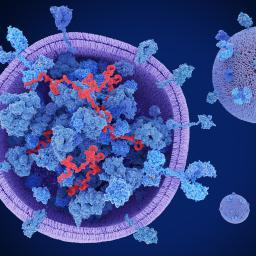 |
by Jessica Hamzelou on (#6RXA9)
This article first appeared in The Checkup,MIT Technology Review'sweekly biotech newsletter. To receive it in your inbox every Thursday, and read articles like this first,sign up here. Over the past month or so, I've been working on a story about exosomes. You might have seen them advertised-they're being touted as a hot new beauty treatment,...
|
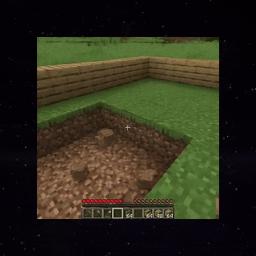 |
by Scott J Mulligan on (#6RWVA)
When you walk around in a version of the video game Minecraft from the AI companies Decart and Etched, it feels a little off. Sure, you can move forward, cut down a tree, and lay down a dirt block, just like in the real thing. If you turn around, though, the dirt block you just...
|
 |
by Benjamin Brooks on (#6RWVB)
In late October, News Corp filed a lawsuit against Perplexity AI, a popular AI search engine. At first glance, this might seem unremarkable. After all, the lawsuit joins more than two dozen similar cases seeking credit, consent, or compensation for the use of data by AI developers. Yet this particular dispute is different, and it...
|
 |
by Melissa Heikkilä, Mat Honan on (#6RWRB)
ChatGPT can now search the web for up-to-date answers to a user's queries, OpenAI announced today. Until now, ChatGPT was mostly restricted to generating answers from its training data, which is current up to October 2023 for GPT-4o, and had limited web search capabilities. Searches about generalized topics will still draw on this information from...
|
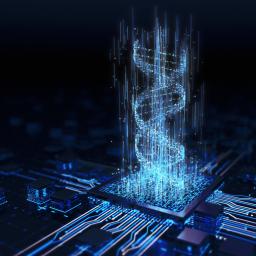 |
by MIT Technology Review Insights on (#6RWJE)
Inspired by an unprecedented opportunity, the life sciences sector has gone all in on AI. For example, in 2023, Pfizer introduced an internal generative AI platform expected to deliver $750 million to $1 billion in value. And Moderna partnered with OpenAI in April 2024, scaling its AI efforts to deploy ChatGPT Enterprise, embedding the tool's...
|
 |
by Charlotte Jee on (#6RWJF)
This is today's edition ofThe Download,our weekday newsletter that provides a daily dose of what's going on in the world of technology. Housing is an election issue. But the US sucks at it. Ahead of abortion access, ahead of immigration, and way ahead of climate change, US voters under 30 are most concerned about one...
|
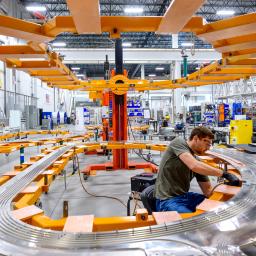 |
by Casey Crownhart on (#6RWD8)
This article is from The Spark, MIT Technology Review's weekly climate newsletter. To receive it in your inbox every Wednesday, sign up here. On an overcast day in early October, I picked up a rental car and drove to Devens, Massachusetts, to visit a hole in the ground. Commonwealth Fusion Systems has raised over $2...
|
 |
by David Rotman on (#6RWD9)
Ahead of abortion access, ahead of immigration, and way ahead of climate change, US voters under 30 are most concerned about one issue: housing affordability. And it's not just young voters who are identifying soaring rents and eye-watering home sale prices as among their top worries. For the first time in recent memory, the cost...
|
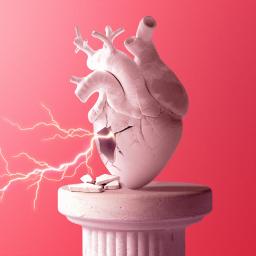 |
by Charlotte Jee on (#6RVMC)
This is today's edition ofThe Download,our weekday newsletter that provides a daily dose of what's going on in the world of technology. The arrhythmia of our current age Arrhythmia means the heart beats, but not in proper time-a critical rhythm of life suddenly going rogue and unpredictable. It's frightening to experience, but what if it's...
|
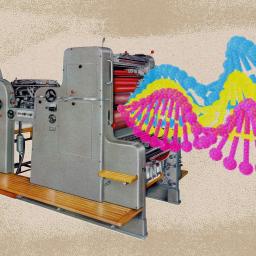 |
by Jenna Ahart on (#6RVGC)
It turns out that you don't need to be a scientist to encode data in DNA. Researchers have been working on DNA-based data storage for decades, but a new template-based method inspired by our cells' chemical processes is easy enough for even nonscientists to practice. The technique could pave the way for an unusual but...
|
 |
by David Ewing Duncan on (#6RVJ1)
Thumpa-thumpa, thumpa-thumpa, bump, thumpa, skip, thumpa-thump, pause ... My heart wasn't supposed to be beating like this. Way too fast, with bumps, pauses, and skips. On my smart watch, my pulse was topping out at 210 beats per minute and jumping every which way as my chest tightened. Was I having a heart attack? The...
|
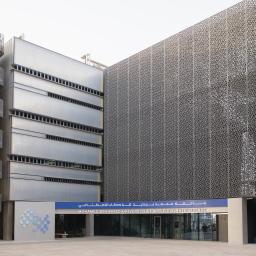 |
by Prof. Timothy Baldwin on (#6RTPH)
A few years ago, I had to make one of the biggest decisions of my life: continue as a professor at the University of Melbourne or move to another part of the world to help build a brand new university focused entirely on artificial intelligence. With the rapid development we have seen in AI over...
|
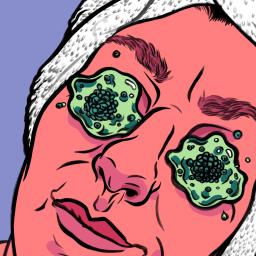 |
by Charlotte Jee on (#6RTPJ)
This is today's edition ofThe Download,our weekday newsletter that provides a daily dose of what's going on in the world of technology. Exosomes are touted as a trendy cure-all. We don't know if they work. There's a trendy new cure-all in town-you might have seen ads pop up on social media or read rave reviews...
|
 |
by Melissa Heikkilä on (#6RTM6)
This story originally appeared in The Algorithm, our weekly newsletter on AI. To get stories like this in your inbox first, sign up here. War is a catalyst for change, an expert in AI and warfare told me in 2022. At the time, the war in Ukraine had just started, and themilitary AI business was...
|
 |
by Jessica Hamzelou on (#6RTJ6)
There's a trendy new cure-all in town-you might have seen ads pop up on social media or read rave reviews in beauty magazines. Exosomes are being touted as a miraculous treatment for hair loss, aging skin, acne, eczema, pain conditions, long covid, and even neurological diseases like Parkinson's and Alzheimer's. That's, of course, if you...
|
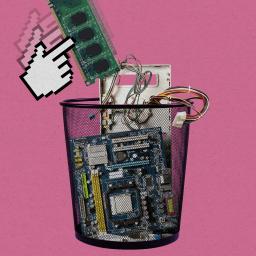 |
by Casey Crownhart on (#6RSZ8)
Generative AI could account for up to 5 million metric tons of e-waste by 2030, according to a new study. That's a relatively small fraction of the current global total of over 60 million metric tons of e-waste each year. However, it's still a significant part of a growing problem, experts warn. E-waste is the...
|
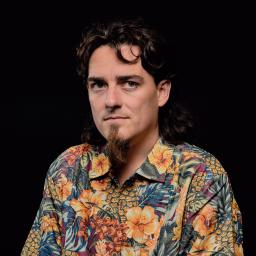 |
by Charlotte Jee on (#6RSWC)
This is today's edition ofThe Download,our weekday newsletter that provides a daily dose of what's going on in the world of technology. Palmer Luckey on the Pentagon's future of mixed reality Palmer Luckey has, in some ways, come full circle. His first experience with virtual-reality headsets was as a teenage lab technician at a defense...
|
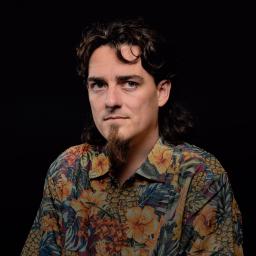 |
by James O'Donnell on (#6RSQN)
Palmer Luckey has, in some ways, come full circle. His first experience with virtual-reality headsets was as a teenage lab technician at a defense research center in Southern California, studying their potential to curb PTSD symptoms in veterans. He then built Oculus, sold it to Facebook for $2 billion, left Facebook after a highly public...
|
 |
by Rhiannon Williams on (#6RSQP)
The US has a major problem with education inequality. Children from low-income families are less likely to receive high-quality education, partly because poorer districts struggle to retain experienced teachers. Artificial intelligence could help, by improving the one-on-one tutoring sometimes used to supplement class instruction in these schools. With help from an AI tool, tutors could...
|
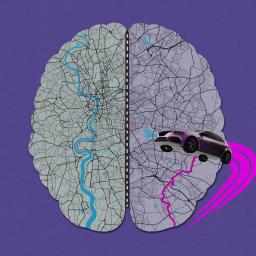 |
by Rhiannon Williams on (#6RR09)
This is today's edition ofThe Download,our weekday newsletter that provides a daily dose of what's going on in the world of technology. How Wayve's driverless cars will meet one of their biggest challenges yet The UK driverless-car startup Wayve is headed west. The firm's cars learned to drive on the streets of London. But Wayve...
|
 |
by Scott J Mulligan on (#6RQWT)
This new AI technology-it's very interesting to learn how it works and understand it more," says 10-year-old Luca, a young AI model maker. Luca is one of the first kids to try Little Language Models, a new application from Manuj and Shruti Dhariwal, two PhD researchers at MIT's Media Lab, that helps children understand how...
|
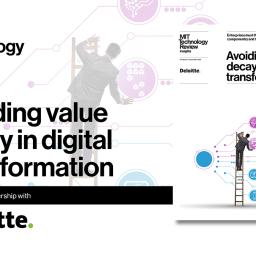 |
by MIT Technology Review Insights on (#6RQA1)
Mission-critical digital transformation projects too often end with a whimper rather than a bang. An estimated three-quarters of corporate transformation efforts fail to deliver their intended return on investment. Given the rapidly evolving technology landscape, companies often struggle to deliver short-term results while simultaneously reinventing the organization and keeping the business running day-to-day. Post-implementation, some...
|
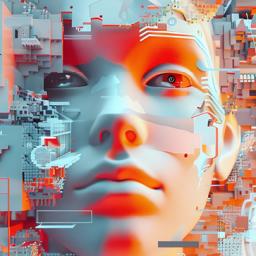 |
by Ken Mugrage and Srinivasan Raguraman on (#6RQ68)
Generative AI has the power to surprise in a way that few other technologies can. Sometimes that's a very good thing; other times, not so good. In theory, as generative AI improves, this issue should become less important. However, in reality, as generative AI becomes more human" it can begin to turn sinister and unsettling,...
|
 |
by Will Douglas Heaven on (#6RQ69)
The UK driverless-car startup Wayve is headed west. The firm's cars learned to drive on the streets of London. But Wayve has announced that it will begin testing its tech in and around San Francisco as well. And that brings a new challenge: Its AI will need to switch from driving on the left to...
|
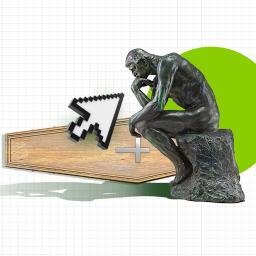 |
by Rhiannon Williams on (#6RQ3V)
This is today's edition ofThe Download,our weekday newsletter that provides a daily dose of what's going on in the world of technology. Introducing: The AI Hype Index There's no denying that the AI industry moves fast. Each week brings a bold new announcement, product release, or lofty claim that pushes the bounds of what we...
|
 |
by Casey Crownhart on (#6RQ1P)
This article is from The Spark, MIT Technology Review's weekly climate newsletter. To receive it in your inbox every Wednesday, sign up here. As a climate reporter, I'm all too aware of the greenhouse-gas emissions that come from food production. And yet, I'm not a vegan, and I do enjoy a good cheeseburger (at least...
|
 |
by Melissa Heikkilä on (#6RPCA)
Google DeepMind has developed a tool for identifying AI-generated text and is making it available open source. The tool, called SynthID, is part of a larger family of watermarking tools for generative AI outputs. The company unveiled a watermark for images last year, and it has since rolled out one for AI-generated video. In May,...
|
 |
by Betsy Mason on (#6RP8S)
In his quest to understand the hermit crab housing market, biologist Mark Laidre of Dartmouth College had to get creative. Crabs are always looking to move into a bigger, better shell, but having really nice digs also comes with risks. Sometimes crabs gang up to pull an inhabitant out of an especially desirable shell. If...
|
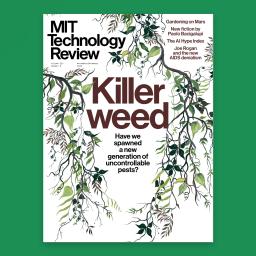 |
by Rhiannon Williams on (#6RP62)
This is today's edition ofThe Download,our weekday newsletter that provides a daily dose of what's going on in the world of technology. Introducing: the Food issue What are we going to eat? It is the eternal question. We humans have been asking ourselves this for as long as we have been human. The question itself...
|
 |
by The Editors on (#6RP3T)
There's no denying that the AI industry moves fast. Each week brings a bold new announcement, product release, or lofty claim that pushes the bounds of what we previously thought was possible. Separating AI fact from hyped-up fiction isn't always easy. That's why we've created the AI Hype Index-a simple, at-a-glance summary of everything you...
|
 |
by Anya Kamenetz on (#6RP3V)
Under a slice-of-heaven sky, 150 acres of rolling green hills stretch off into the distance. About a dozen people-tree enthusiasts, conservationists, research biologists, biotech entrepreneurs, and a venture capitalist in long socks and a floppy hat-have driven to this rural spot in New York state on a perfect late-July day. We are here to see...
|